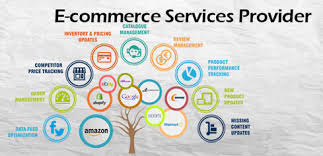
Choosing the right eCommerce platform is one of the most critical decisions a business can make when selling online. Your platform sets the foundation for your entire digital storefront—from user experience and checkout speed to inventory management and marketing integrations.
With so many options like Shopify, WooCommerce, BigCommerce, Magento, and more, how do you choose the one that truly fits your business needs?
In this guide, we’ll walk you through everything you need to know to make an informed decision.
1. Understand Your Business Requirements First
Before diving into features and pricing, ask yourself a few key questions:
What kind of products are you selling? (Digital, physical, subscriptions?)
- How large is your product catalog?
- Do you need support for B2B transactions?
- Are you looking for a simple out-of-the-box setup or a customizable solution?
- What’s your budget?
A small business with 50 products has very different needs from a global retailer with 10,000 SKUs and international logistics.
2. Hosted vs. Self-Hosted Platforms
One of the first decisions to make is whether you want a hosted or self-hosted platform:
Hosted platforms like Shopify, Wix, and BigCommerce manage everything on their servers. You pay a monthly fee, and they take care of hosting, security, and updates. Ideal for ease of use.
Self-hosted platforms like WooCommerce and Magento give you complete control but require you to manage your own hosting, updates, and technical security. Better for businesses with developer support.
Pro tip: If you’re just starting out or want to scale quickly without worrying about servers, hosted platforms might be the better option.
3. Evaluate Core Features
When comparing platforms, make sure to check for the following features:
Ease of Use: Is the dashboard intuitive? Can you manage your store without needing a developer for every change?
Payment Gateway Integration: Does it support your preferred gateways like Stripe, Razorpay, or PayPal?
Inventory Management: Can it handle multiple SKUs, variants, and low-stock alerts?
Mobile Responsiveness: Does the store look great and function seamlessly on mobile?
SEO & Blogging Tools: A built-in blog and SEO tools help boost visibility on search engines.
4. Scalability and Performance
Your business may be small now, but it won’t stay that way. Choose a platform that can grow with you. Key considerations:
Can it handle traffic spikes during sale events?
Does it allow adding multiple storefronts or multilingual support?
Can it integrate easily with third-party tools like CRMs or marketing software?
Performance also plays a big role in customer experience. A slow-loading site can hurt conversions, especially on mobile.
5. Third-Party Integrations
Modern eCommerce isn’t just about listing products and checking out. It’s also about integrations:
Email Marketing Tools: Klaviyo, Mailchimp, Constant Contact
Shipping Providers: ShipRocket, FedEx, DHL, etc.
Analytics Tools: Google Analytics, Hotjar, Facebook Pixel
Look for platforms that offer plug-and-play integrations or APIs to connect your marketing and operations tech stack seamlessly.
6. Customization and Design Flexibility
Your brand identity matters. A rigid template won’t help you stand out in a crowded marketplace.
Does the platform offer customizable themes?
Can you edit HTML/CSS/JS if needed?
Does it support custom product pages or dynamic pricing?
Platforms like WooCommerce and Magento provide extreme flexibility, while others like Shopify strike a balance between ease of use and customization.
7. Security and Compliance
Cybersecurity is non-negotiable. Your platform should offer:
SSL certificates
- PCI compliance
- Regular security patches
- Fraud detection tools
- GDPR compliance tools (especially for European markets)
- Never compromise on this area—your reputation and customer trust depend on it.
8. Cost Breakdown
While some platforms look cheaper on the surface, there may be hidden costs in the form of:
Transaction fees
- Add-ons or apps
- Developer support
- Hosting and domain costs (for self-hosted options)
Do a full TCO (Total Cost of Ownership) calculation before committing.
9. Community Support and Documentation
When things go wrong—or you want to do something new—you need support.
Is there 24/7 customer service?
- Do they have an active community/forum?
- Is the documentation thorough and up to date?
Some platforms offer live chat, while others rely on user forums or email tickets. Choose based on your comfort level and urgency needs.
10. When in Doubt, Partner with an Expert
Selecting the right eCommerce platform isn’t just a one-time task—it’s the foundation of your long-term digital growth.
If you’re feeling overwhelmed, it’s wise to consult an experienced eCommerce service provider who can analyze your needs, recommend the best-fit solution, and even manage the entire setup process for you.
Final Thoughts
The right eCommerce platform can streamline operations, boost sales, and improve customer satisfaction. But the wrong one? It can drain your budget and leave you frustrated with limited features and poor scalability.
Take your time, compare wisely, and consider professional support if needed. Your business deserves the right tools to thrive in an ever-competitive digital market.




